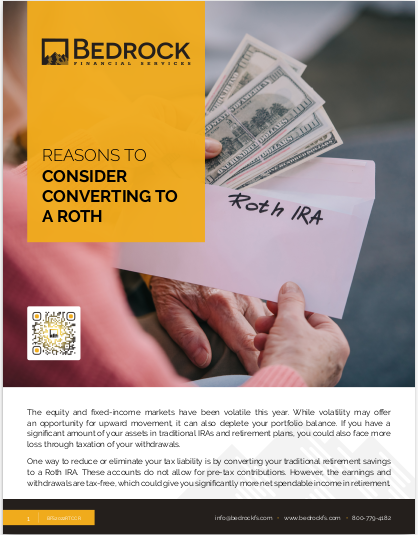Key Takeaways
-
Small missteps—often overlooked—are usually the hidden drivers behind client churn. Even with solid products, neglecting communication or follow-up can unravel a client relationship.
-
Retention is not about offering the lowest price. It’s about the experience you deliver from the first touchpoint through ongoing service.
You’re Not Following Up When It Matters Most
Most client relationships start strong. You’ve explained the policy, answered their questions, and closed the deal. But what happens in the weeks that follow is often what determines if that client stays or leaves.
In 2025, with digital expectations higher than ever, clients don’t wait around for a quarterly check-in. If a client doesn’t hear from you after enrollment, especially in the first 30 days, it signals disinterest. And that silence makes it easier for another agent to swoop in when the next enrollment season rolls around.
Follow-up isn’t optional anymore. It’s expected. Even if the product doesn’t require frequent adjustments, your relationship does. Build a 7-, 30-, and 90-day post-sale communication sequence. A simple check-in message, a benefits reminder, or a “how’s it going” email can make all the difference.
You’re Educating on Products, Not Their Situation
Financial professionals often spend too much time explaining what a policy does rather than how it solves the client’s personal challenge. Your product knowledge is impressive—but it’s not the hook.
What clients want is relevance. They need to see how a solution fits their life, not the brochure. In 2025, generic explanations are everywhere. AI tools and online bots already explain features. What they can’t do well is relate products to someone’s unique risk tolerance, lifestyle, or family dynamics.
So make the conversation about them:
-
Ask more context-based questions.
-
Use conditional phrasing: “If you’re planning to retire in the next 5 years…”
-
Reflect their concerns back to them in your pitch.
This repositions you as an advisor, not a seller.
You’re Still Over-Relying on Infrequent Annual Reviews
The annual review is a staple. But it’s no longer enough. Clients expect ongoing visibility, not just a once-a-year recap.
Technology in 2025 allows you to create rolling dashboards, usage reports, and dynamic plan comparisons. If you’re only touching base once a year, your competitor who checks in twice or offers live access to benefits tracking is going to feel more current and accessible.
Create reasons to connect quarterly:
-
Mid-year benefit checks
-
Tax season prep
-
Life event surveys every 6 months
A predictable, ongoing cadence creates retention momentum. The more you appear before something changes, the less likely they’ll change advisors.
You’re Communicating in a Way That Feels Transactional
One of the most common complaints clients have in 2025 is that advisors treat them like a sale instead of a relationship. And clients can feel it—especially when all communication centers around renewals, paperwork, or upsells.
Transactional communication creates distance. Relational communication builds trust.
What can you do differently?
-
Personalize every outreach. Not just with their name, but with context: “I remember you mentioned your daughter is graduating this year…”
-
Mix value-based content into your communication stream. Share a 2-minute video, a new regulation breakdown, or tax tips.
-
Send handwritten cards. Yes, even in 2025, this stands out.
It’s not about adding fluff. It’s about signaling that your relationship has value beyond the commission.
You’re Waiting for Them to Come to You with Problems
You might think no news is good news. But in reality, silence from clients can often mean disinterest, confusion, or worse—disengagement.
By the time a client comes to you with a complaint or problem, they’ve likely already considered leaving.
Being proactive means:
-
Sending a quarterly “Let us know if anything changed” form
-
Using automated check-ins at key life milestones: age 59½, retirement, a child turning 26, etc.
-
Offering annual policy reviews before they ask for one
Clients stay where they feel anticipated—not just serviced.
You’re Not Leveraging Feedback Loops
In 2025, feedback is a retention currency. If you’re not systematically collecting, analyzing, and acting on client feedback, you’re missing one of the most powerful tools for loyalty.
Feedback loops are about more than satisfaction scores. They should give you insight into:
-
What clients value most about working with you
-
What frustrates them
-
What they wish they had known sooner
Set up post-enrollment surveys. Use Net Promoter Score (NPS) tools quarterly. Build a Google Form that sends after every major interaction. Most importantly—act on what you learn.
Let your clients see their feedback reflected in how you improve service. That visibility builds trust.
You’re Letting Automation Replace Personalization
Automation is necessary for scale. But if you’ve handed over the entire client experience to automated emails, generic touchpoints, and AI bots, you’re leaving the door open for disengagement.
Clients are savvy. They know when they’re talking to a script. Automation should support your voice, not replace it.
Where to keep it personal:
-
Birthday and anniversary messages
-
First-year follow-ups
-
Responses to negative feedback or concerns
Use automation for reminders and logistics—but infuse real, human warmth in the touchpoints that matter.
You’re Not Visible Between Policy Events
If the only time a client hears from you is when it’s time to renew, upgrade, or enroll in a plan, you’re not building brand loyalty—you’re building a transaction loop.
Your visibility should exist outside the sales cycle. You don’t have to flood their inbox, but your name should stay top-of-mind throughout the year.
Ways to build visibility:
-
Monthly newsletters with value-rich insights
-
LinkedIn or Facebook presence with weekly educational content
-
Hosting short webinars or Q&As once a quarter
Your presence reassures clients that you’re still in their corner, even when no decision is pending.
You’re Avoiding Difficult Conversations
Clients leave when they feel blindsided. If costs rise, benefits change, or a product becomes less competitive, they want to hear it from you—not from the bill or a competitor.
In 2025, transparency is your best retention strategy. Be direct about:
-
Premium increases
-
Coverage changes
-
Plan performance compared to alternatives
It may feel risky to deliver bad news. But what you lose in short-term comfort, you gain in long-term credibility. Clients stay with advisors who tell the truth—even when it’s uncomfortable.
Retention Starts With What You Prioritize
Losing clients is rarely about one big mistake. It’s the result of small, repeated oversights that make clients feel undervalued, unheard, or forgotten.
You don’t need to overhaul your entire business. But you do need to examine what systems you’ve placed on autopilot—and ask whether they’re still serving your clients well.
If you’re serious about growing your practice in 2025, retention has to be designed intentionally.
We help financial professionals like you keep clients longer, build smarter workflows, and stay personally connected—without burning out. Sign up with Bedrock Financial Services today and let us help you transform retention into a system, not a stress point.







